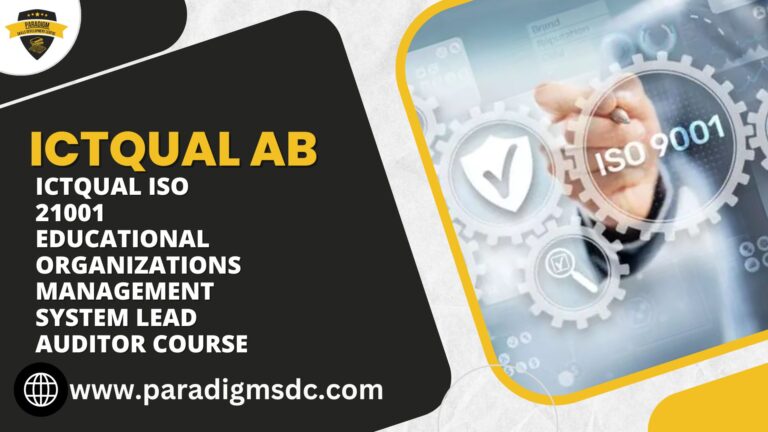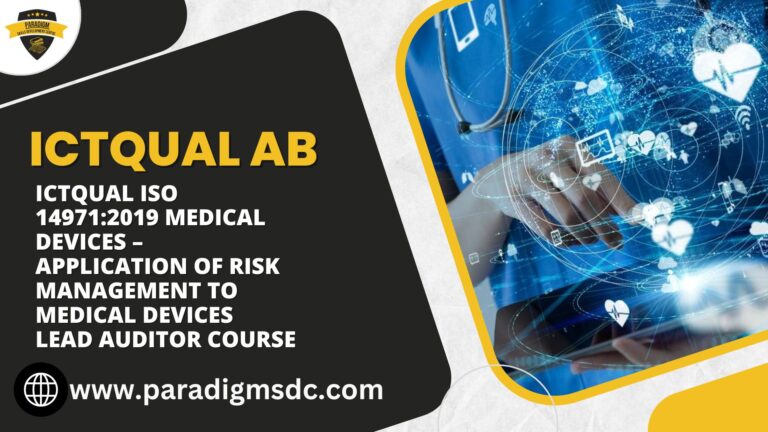Course Introduction
The ICTQual Level 3 Award in First Aid at Work (Annual Refresher) is designed to refresh and update the skills and knowledge of individuals who have previously completed a higher-level first aid at work qualification. This course ensures that first aiders maintain their competency and are updated on the latest practices and guidelines in first aid procedures.
Course Overview
Participants in this course will revisit essential first aid techniques and protocols, focusing on scenarios relevant to workplace environments. The training emphasizes practical skills application through simulations and scenario-based learning.
Course Study Units
The study units typically cover:
- Basic Life Support (BLS)
- Recovery Position
- Management of Severe Bleeding
- Handling Shock
- Minor Injuries
- Medical Emergencies
Learning Outcomes
Upon completion, participants will:
Basic Life Support (BLS)
- CPR Proficiency: Demonstrate competence in performing cardiopulmonary resuscitation (CPR) on adults, children, and infants, including correct hand placement, compression depth, and rate.
- AED Utilization: Understand and effectively use automated external defibrillators (AEDs) in conjunction with CPR, including correct pad placement and following AED prompts.
- Choking Management: Apply appropriate techniques to assist choking victims of different age groups, including back blows and abdominal thrusts, ensuring effective clearance of airway obstruction.
Recovery Position
- Assessment Skills: Assess the condition of an unconscious but breathing casualty to determine the need for placement in the recovery position.
- Correct Positioning: Demonstrate the correct technique for placing a casualty into the recovery position, ensuring airway patency and preventing further harm.
- Monitoring and Reassessment: Understand the importance of continuous monitoring and reassessment of casualties in the recovery position to ensure ongoing safety and responsiveness.
Management of Severe Bleeding
- Identification of Bleeding Types: Differentiate between arterial, venous, and capillary bleeding, and apply appropriate management techniques based on the severity and type of bleeding.
- Control Techniques: Demonstrate proficiency in applying direct pressure, dressings, and tourniquets to control severe bleeding effectively while minimizing the risk of further injury.
- Assessment of Circulatory Status: Assess the casualty’s circulatory status before, during, and after bleeding control interventions to ensure adequate perfusion and circulation.
Handling Shock
- Recognition of Shock Symptoms: Identify signs and symptoms of shock, including changes in skin color, altered mental status, and rapid pulse, to initiate prompt intervention.
- Immediate Management: Implement immediate first aid measures to manage shock, including positioning the casualty correctly, maintaining body temperature, and providing reassurance and emotional support.
- Continuous Monitoring: Monitor the casualty’s vital signs and responsiveness continuously, adjusting interventions as necessary to prevent deterioration and improve outcomes.
Minor Injuries
- Assessment of Minor Injuries: Assess and triage minor injuries such as cuts, grazes, burns, and scalds to determine appropriate first aid interventions.
- Effective Treatment Techniques: Apply correct techniques for cleaning, dressing, and bandaging minor wounds to promote healing and prevent infection.
- Pain Management: Administer appropriate pain relief measures for minor injuries, considering factors such as the severity of pain and the casualty’s medical history.
Medical Emergencies
- Recognition of Medical Emergencies: Identify signs and symptoms of common medical emergencies, including heart attacks, strokes, asthma attacks, and anaphylaxis, to initiate timely intervention.
- First Aid Response: Implement appropriate first aid measures for specific medical emergencies, including administering aspirin for heart attacks, performing the FAST test for strokes, and assisting with inhaler use for asthma attacks.
- Coordination with Emergency Services: Communicate effectively with emergency medical services (EMS) and provide essential information to facilitate timely and appropriate medical care for the casualty.
Course Benefits
- Compliance: Meets regulatory requirements for annual first aid refresher training.
- Skill Maintenance: Ensures first aiders remain competent and capable of responding to emergencies effectively.
- Confidence: Boosts confidence in handling medical emergencies, enhancing workplace safety culture.
Target Audience
This course is ideal for:
- Individuals who hold a current ICTQual Level 3 or equivalent first aid at work qualification.
- Workplace first aiders required to undergo annual refresher training to maintain competency.
Future Progression
Completion of this course provides a solid foundation for:
- Advancing to higher-level first aid qualifications.
- Pursuing specialized training in areas such as pediatric first aid, wilderness first aid, or advanced life support.
Conclusion
The ICTQual Level 3 Award in First Aid at Work (Annual Refresher) ensures that workplace first aiders are well-prepared and updated with the latest techniques to respond effectively to medical emergencies. By maintaining their skills through annual refresher training, participants contribute to a safer and more secure working environment.
Would you like to add or modify anything in this blog post?







